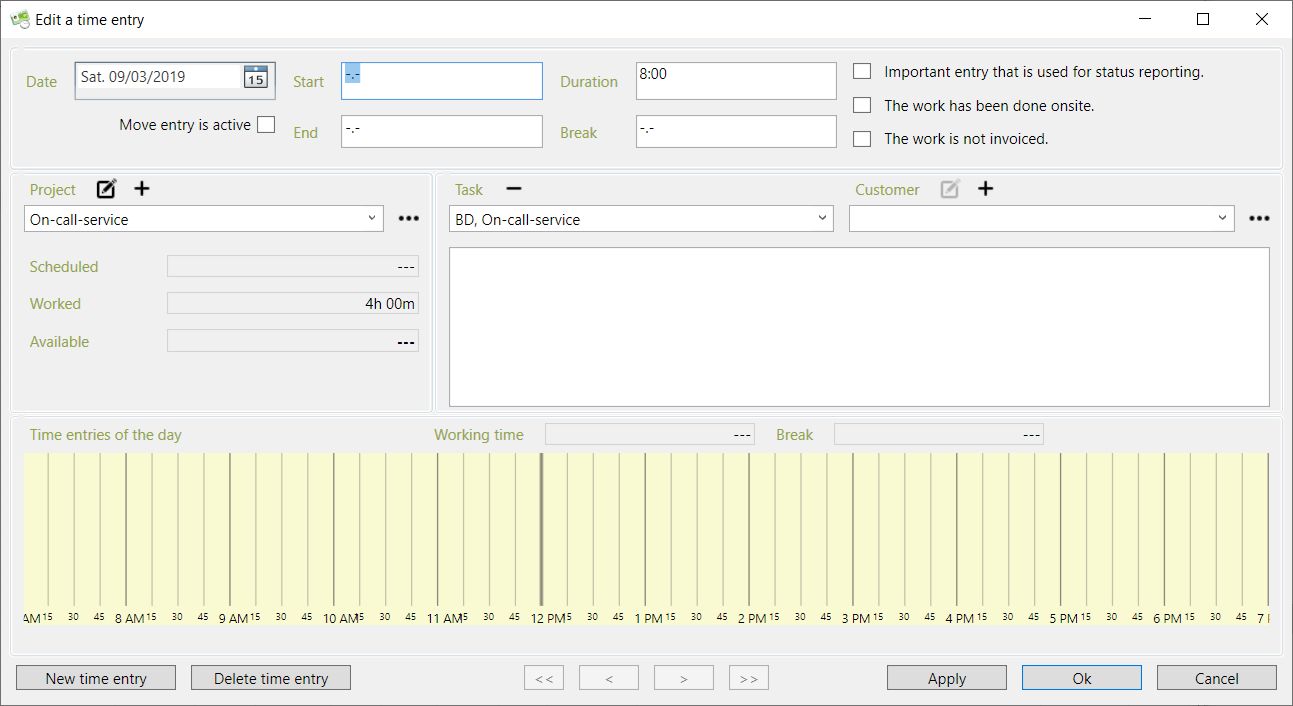Projects and tasks
In TimePunch time entries can be applied to a project and a task. The following pages describes how to manage those in TimePunch.
Creating projects and edit
Using the menu item “Master data / projects” all defined projects will be shown. Inactive projects will be hidden by default, but can be shown by deactivating the checkbox “Only show active projects”.
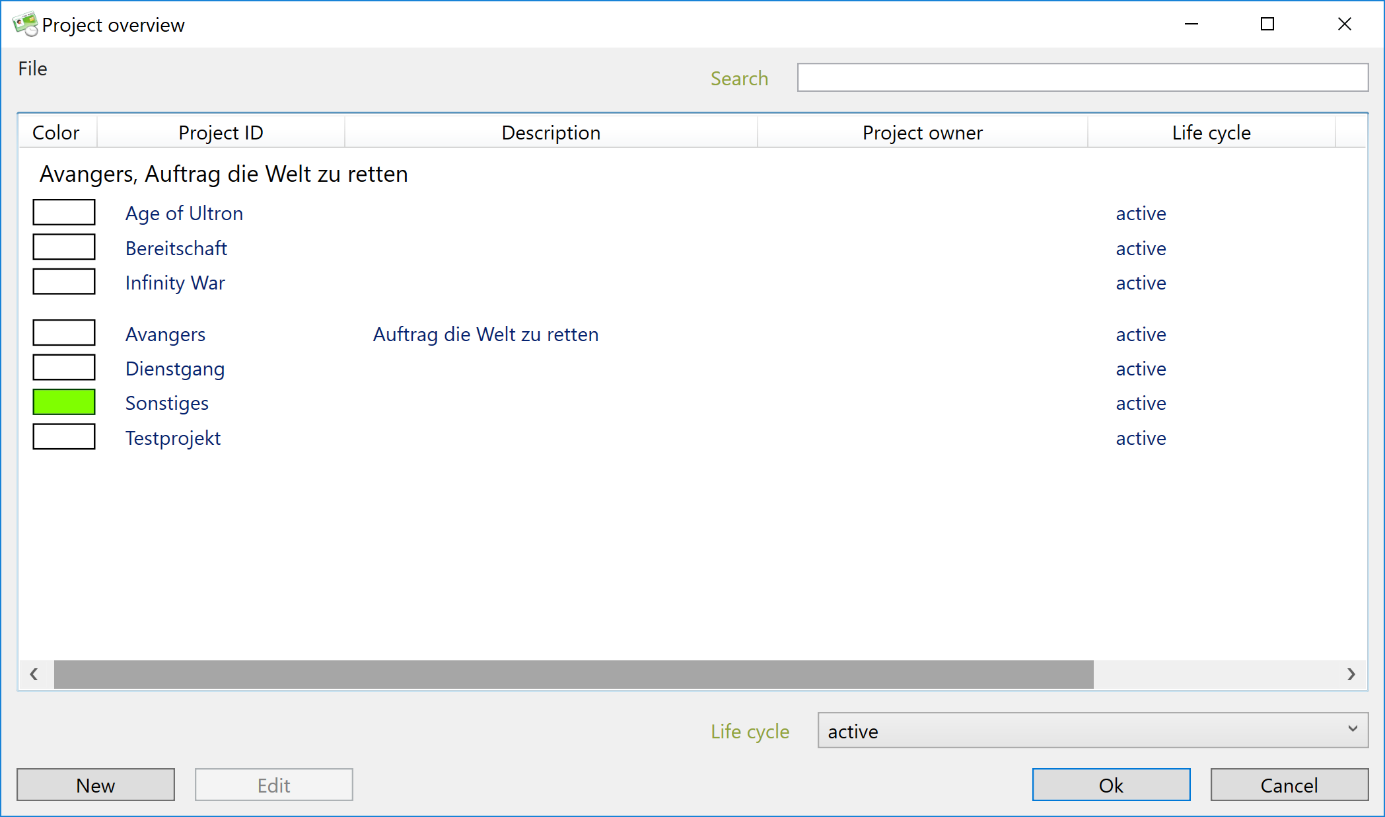
At this dialog new projects can be created and existing projects can be edited with a double click.
By default, all "Active" projects are displayed. By selecting the project cycle, the projects can be displayed in the other life cycles.
Available for selection:
In planning: Projects that are in planning can only be processed. A project booking or evaluation is not possible.
Active: Projects that are active can be edited, posted and evaluated.
Completed: Projects that have been completed can only be evaluated.
Deleted: Deleted projects are no longer usable and can only be reactivated by an administrator.
The project dialogs
After creating the project, a dialog opens the edit of a project.
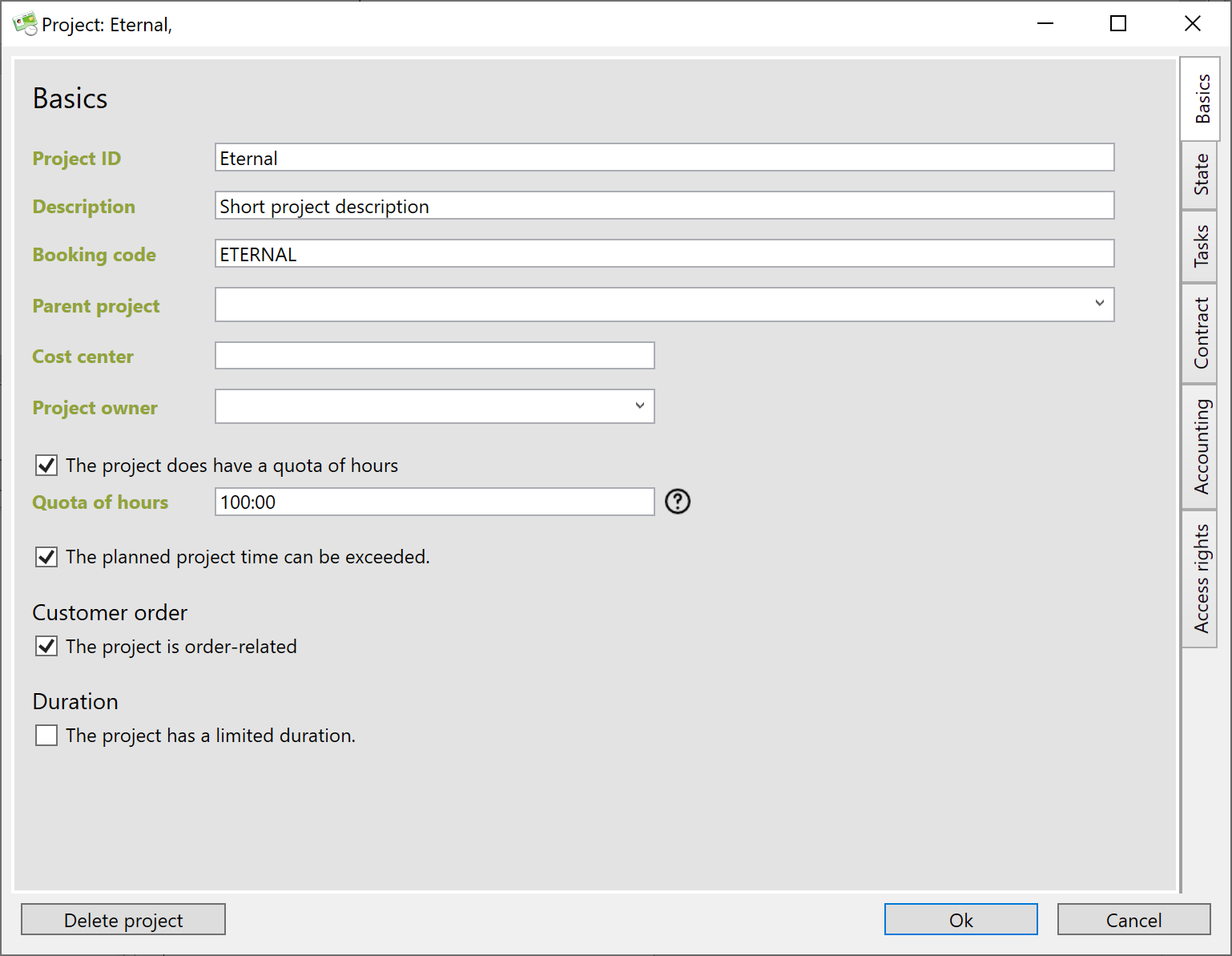
The basic data of the project can be created here. The most important thing here is the project ID. All other data is optional.
Tip: If you do not want to book the parent project itself, you can restrict the access rights accordingly.
Cost center: The cost center is required for exporting to DATEV. Here you can combine different projects into identical cost centers. When exporting to DATEV, the working times are then assigned to the corresponding cost center.
Customer order: If the project is marked as a customer order, further order data can be entered for the project.
**
**
Parent Projects
The parent project forms a grouping for projects. For example, all projects with the same topic can be assigned to a uniform umbrella project. This increases the clarity of the project list.
In addition, the editing of projects is simplified. Changes to the parent project are adopted in the dependent projects. This affects the following settings:
- Cost centre
- Project manager
- Customer
- Project Collaborators
- Yes / No Sales order
- Start and end period
if it is not set, or is not within the range of the parent project.
If a parent project is copied, i.e. if the parent project is selected as a copy template when a new project is created, all dependent projects are also copied. This simplifies the administration of project structures.
Project state
Each project has a project status. This is usually defined as a traffic light status. A project can be classified as "green" (i. e. everything alright),"yellow" (problematic),"red" (critical).
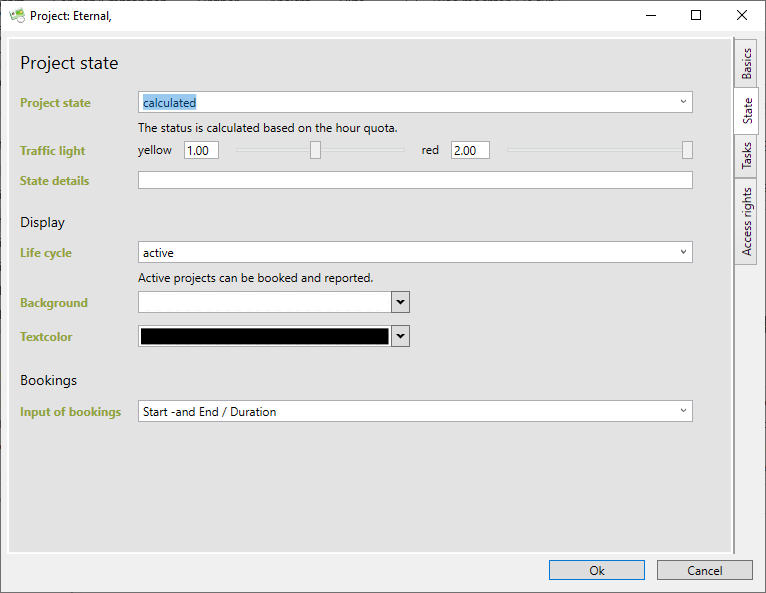
By default, the project status is calculated on the basis of the hours consumed and the available hours quota.
The threshold values for the status "yellow" and "red" can be defined for each project. If the booked hours exceed the hours quota multiplied by the threshold value, the traffic light status is set accordingly.
Of course, you can also set the status manually. In this case, it is helpful to briefly document the traffic light status in the status details.
Bookings:
Here you can define whether the project can be booked with start and end time, with duration or with both input types.
Project cycle
Projects can go through four different project cycles. When a new project is set up, this is in the "in planning" cycle. In this project cycle, it is only set up by the project manager. However, employees can only post to the project in the "active" cycle. When the project is finished, it switches to the "done" cycle. From here on, the project can only be evaluated, but no longer posted.

After deleting the project, it is in the project cycle of deleted projects. Only an employee with administration rights in TimePunch can reactivate a deleted project.
Project-related tasks
Within a project, activities/tasks can be defined. These tasks created in the project are only valid and unique within the project. Even if an task with the same name is created in another project, it cannot be automatically evaluated together.
Tip: If you want tasks to be evaluable across projects, create "General tasks" for this purpose.
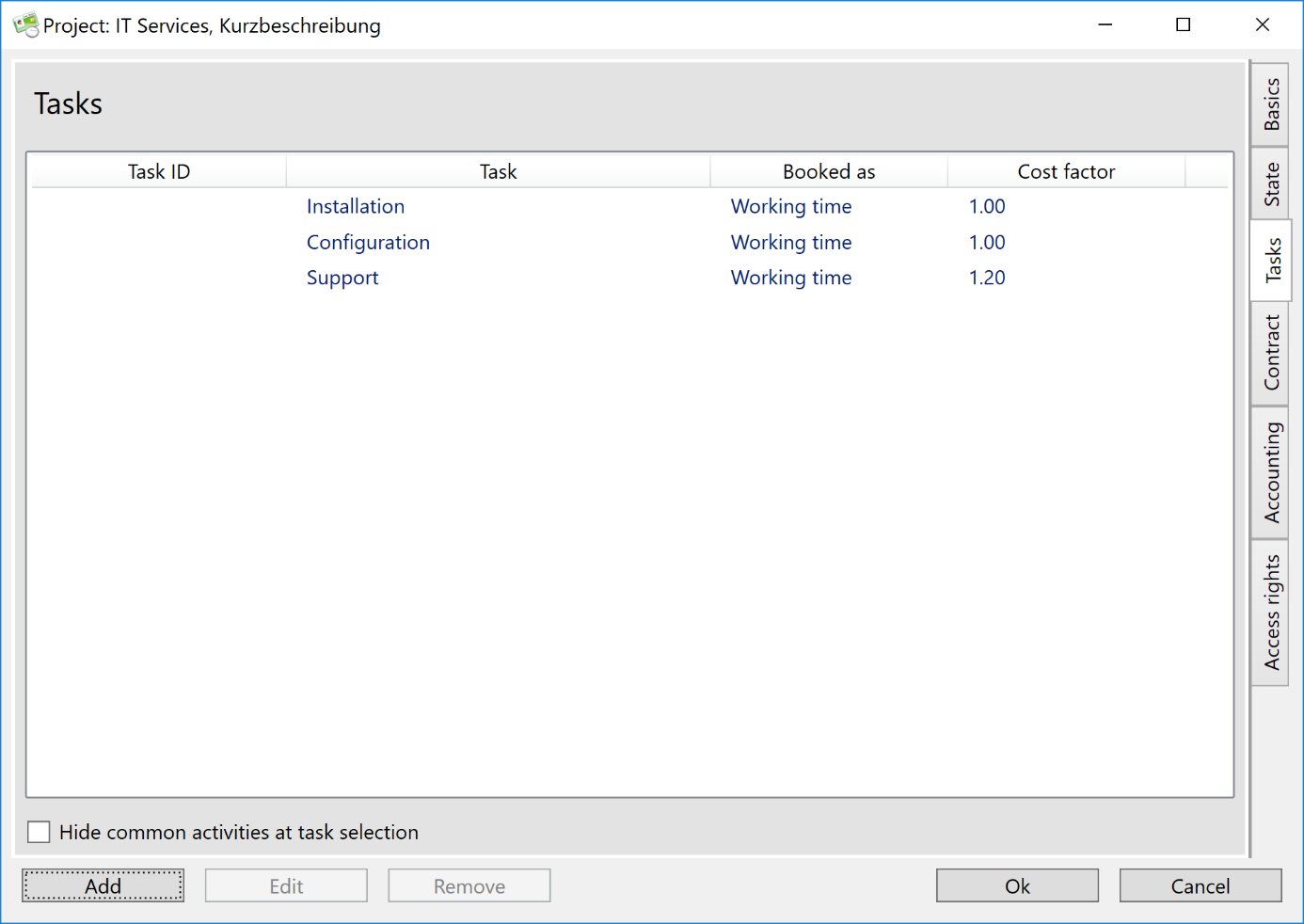
The selection box "Do not display general tasks during selection" allows you to hide general tasks. This is useful, for example, for the Absences project, since general activities such as meetings, planning, and so on are not displayed in these special projects.
Define tasks
If project-related time recording is desired, tasks should also be defined. Tasks allow you to specify the recorded time again exactly.
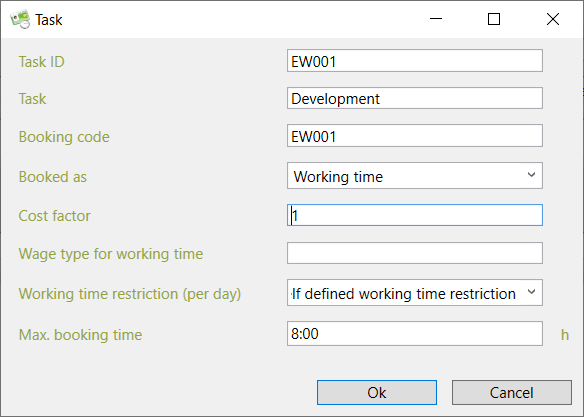
Task-ID
The Task-ID is an abbreviation for the task and can be used e.g. by a ticket system or project planning tool.
Task
The task must have a unique name that can be specified in this field.
Booking code
The booking code is used for booking by means of a barcode reader or third-party systems. If such systems are not in use, the field can be ignored.
Booked as
This field defines what time is. You can enter working time, on-call time, travel time, overtime reduction, vacation, illness, illness (unpaid), special leave, absence.
Cost factor
The cost factor defines the factor at which a potential customer is billed for working time.
A cost factor of 0 means that the working time is not billed to the customer. A cost factor of 2 means that the customer receives a price premium of 100%.
Wage type for working time
In contrast to the cost factor, the wage type defines how the employee is remunerated for the work performed.
Wage software such as DATEV and Lexware define wage types with an hourly rate or a percentage supplement to the hourly wage. When exporting to these systems, such times can therefore be remunerated separately.
Wage type restriction (per day)
This field defines whether the maximum bookable time per day is limited to this task. This is often used by service providers so that freelancers, for example, cannot overbook the projects assigned to them.
This could, however, also be used, for example, to limit the duration of further training measures or similar projects.
Max. booking time
If a manual working time restriction has been defined, one can define in this field the maximum number of hours that can be posted by the employee on one day.
If the employee books more hours for the activity, these hours are automatically reduced.
The shortened hours are then displayed in the "Cutted" field.

Entering contract details
If a project is defined in the basic data as a customer order, then these order-related data for the project can be stored in the "Contract" tab.
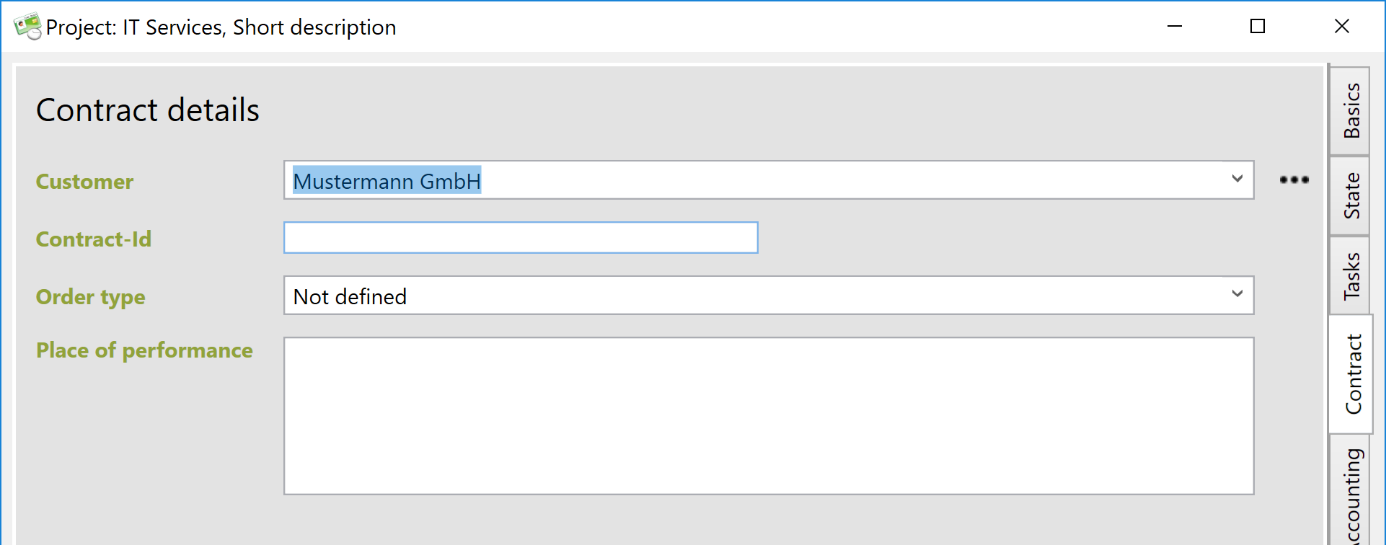
Important order-related data are e. g. the preset customer, the order number, as well as the order type and the location of the service description.
Customer-specific reports can also be created on the basis of this data. Please contact us, we will be happy to advise you.
Accounting-Relevant Data
TimePunch provides a tab with accounting-relevant data for order-related projects.
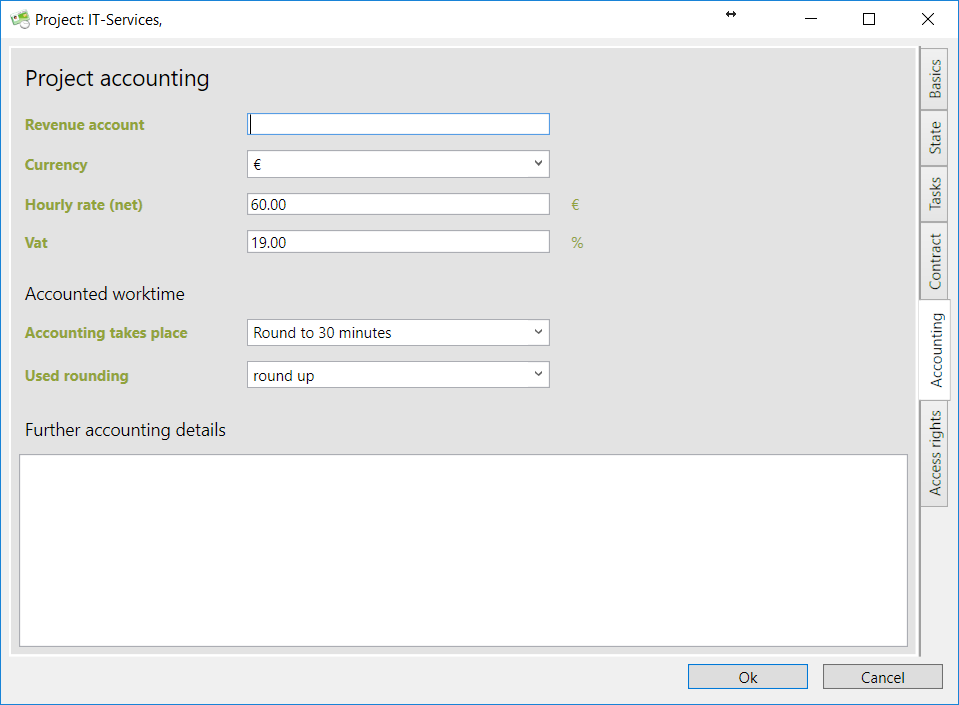
In this dialog box, you define the hourly rate and the currency as well as the rounding used for billing. All billing reports such as "Detailed project accounting" or "Day-based project accounting" use the rounding settings defined in the project.
The field "Further accounting details" is a free text field which can be used for internal purposes or reporting.
Access rights and employee-specific adjustments
In order to keep the project list clear for each individual employee, the access rights for projects can be restricted to employees.

If employees are promoted to assistant, then these employees have all the rights that the project management also has. This means that, for example, the times of the projects can be evaluated, or project settings can be changed.
By double-clicking on the selected employee, the specific adjustments can be made.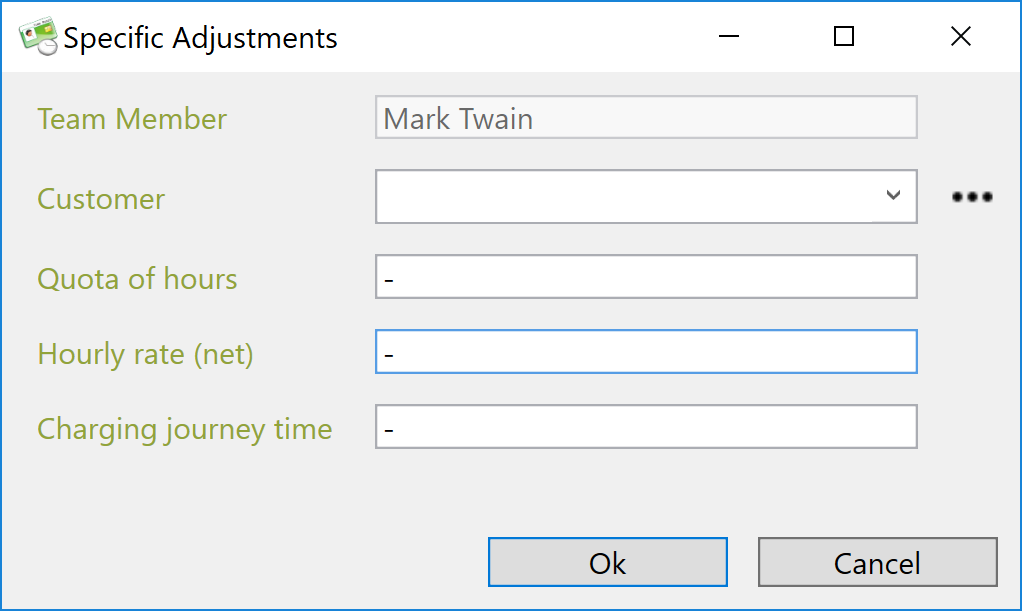
Project Budgets
For every project it’s possible to define its own project budget within TimePunch. This defines the work time budget for the project pool and/or the single staff member.
Project pool
The project pool contains all staff members that are allowed to book on the project and which do not own an exclusive work time budget. That are all members for whom no time budget has been defined.

The work time budget that can be defined at the project dialog directly, is the maximum work time for the project pool. By default all employees share the same project budget.
Here you can also define whether the defined project budget may be exceeded. If this is not the case, employees can only book the hourly quota assigned to the project.
Staff members
The work time budget for a single staff member can be defined at user specific adjustments.
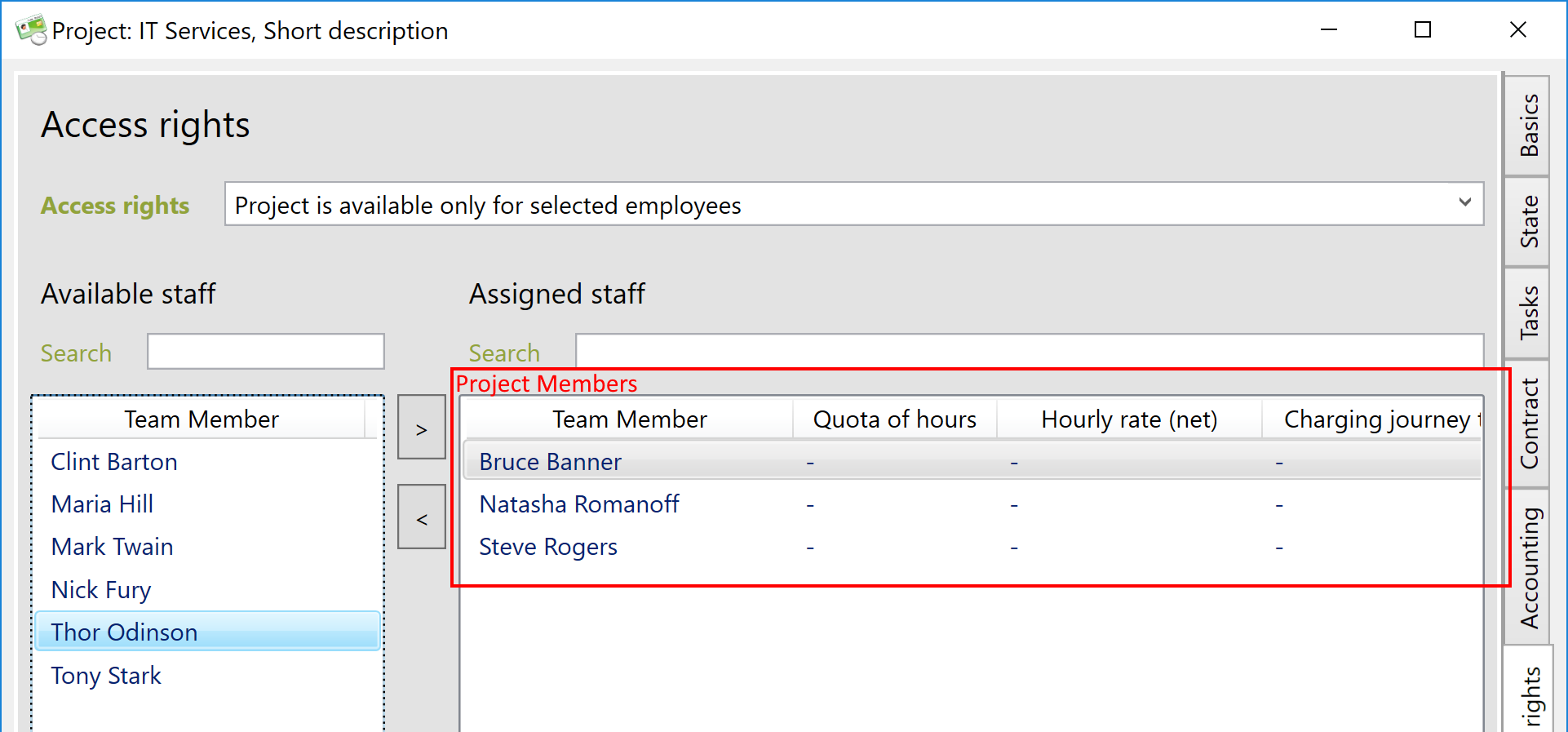
This work time budget is assigned to the staff member exclusively and can only be used by him or herself.
Total budget
The total project budget is the combined project pool budget plus the work time of the staff members.
Common Tasks
If tasks are used in every project, they can be treated as common tasks in TimePunch. Those tasks are useable in every project and therefore need not be created as a new task within the project.
Using the menu “Master data / Edit Common Tasks” the following dialog will be shown.
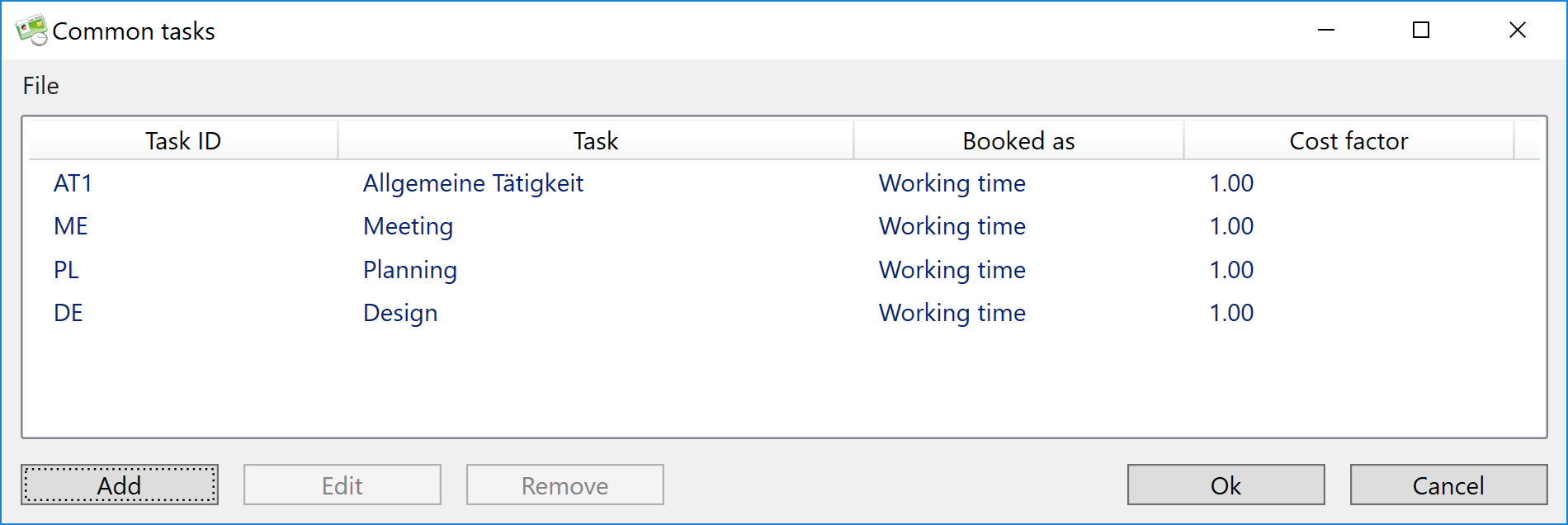
On-call-service
In TimePunch it is possible to enter a time period or a duration as on-call service.
To do this, you must first create a new activity with the booking type "On-call service".
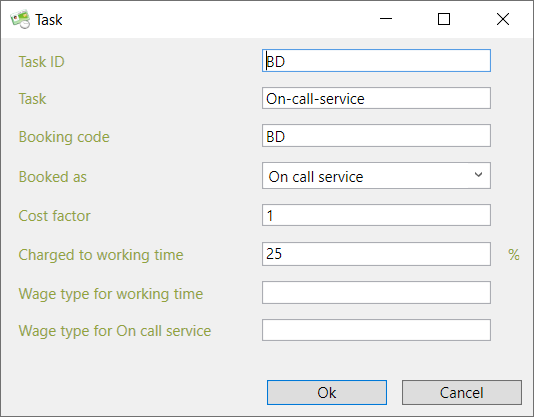
In this context, it is important that the on-call service entries can be credited as a percentage of the working time.
Standby duty is preferably created in TimePunch via the context menu "Create series entries".
Here you can define the From - To date as well as the duration per day for the series entry.
